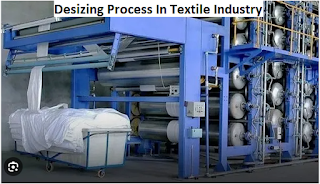Desizing Process in Textile Industry

Desizing Process in the Textile Industry Desizing Desizing is the process of removing sizing material from the warp yarns of woven fabric. Sizing chemical consists of soluble starch material, a coupling agent, a lubricant, and, a range of additives Types of Desizig Method: 1. Hydrolytic Method Rot steep Acid steep Enzymatic steep 2. Oxidative Method Chlorine Chloride Bromide Objectives of Desizing To remove the sizing material from the fabric To increase the absorbency power of the fabric To increase the affinity of the fabric to the dyeing chemical To make the fabric suitable for the next process Steeping It is the process where soaking in the liquid (water) of a solid to extract flavors or to soften it. Rot Steeping In rot steeping, the steeping cloth is passed through warm water of 40-degredegreeserature. For this clot, it is squeezed up to 100% expression by a squeezed roller and kept in washing for 24 hours. Advantages Desizing agent warm water, no special chemical is u...







